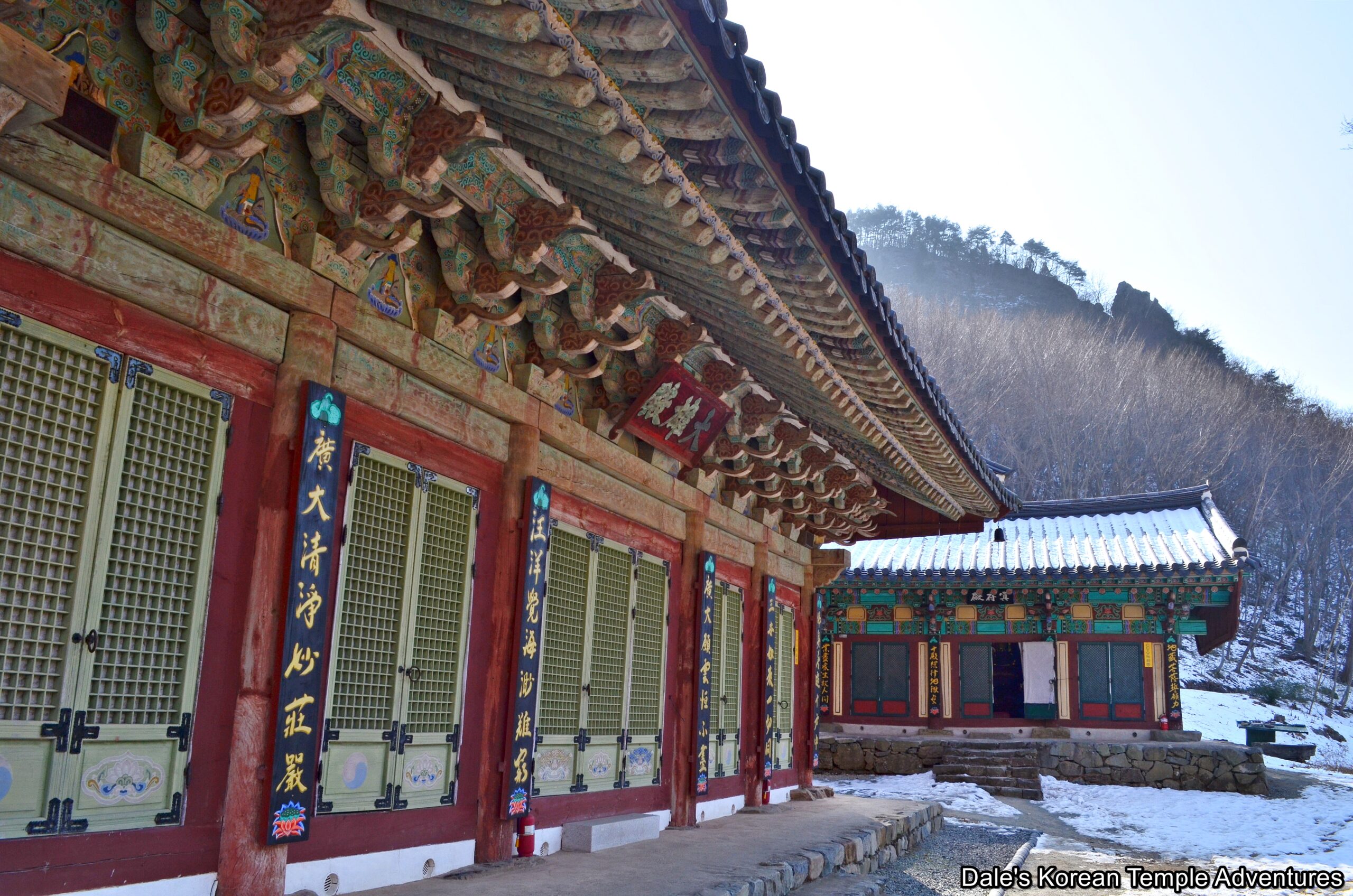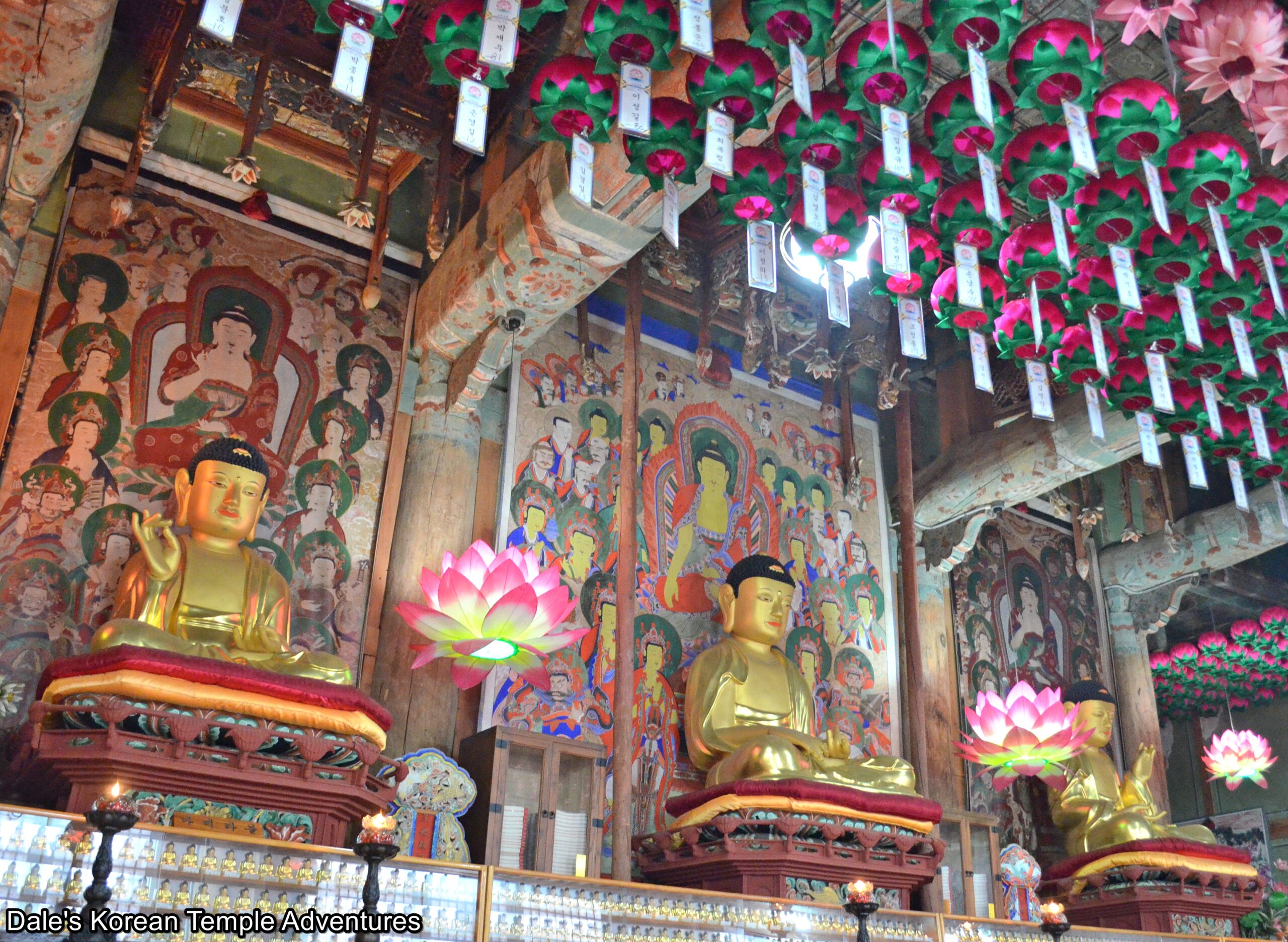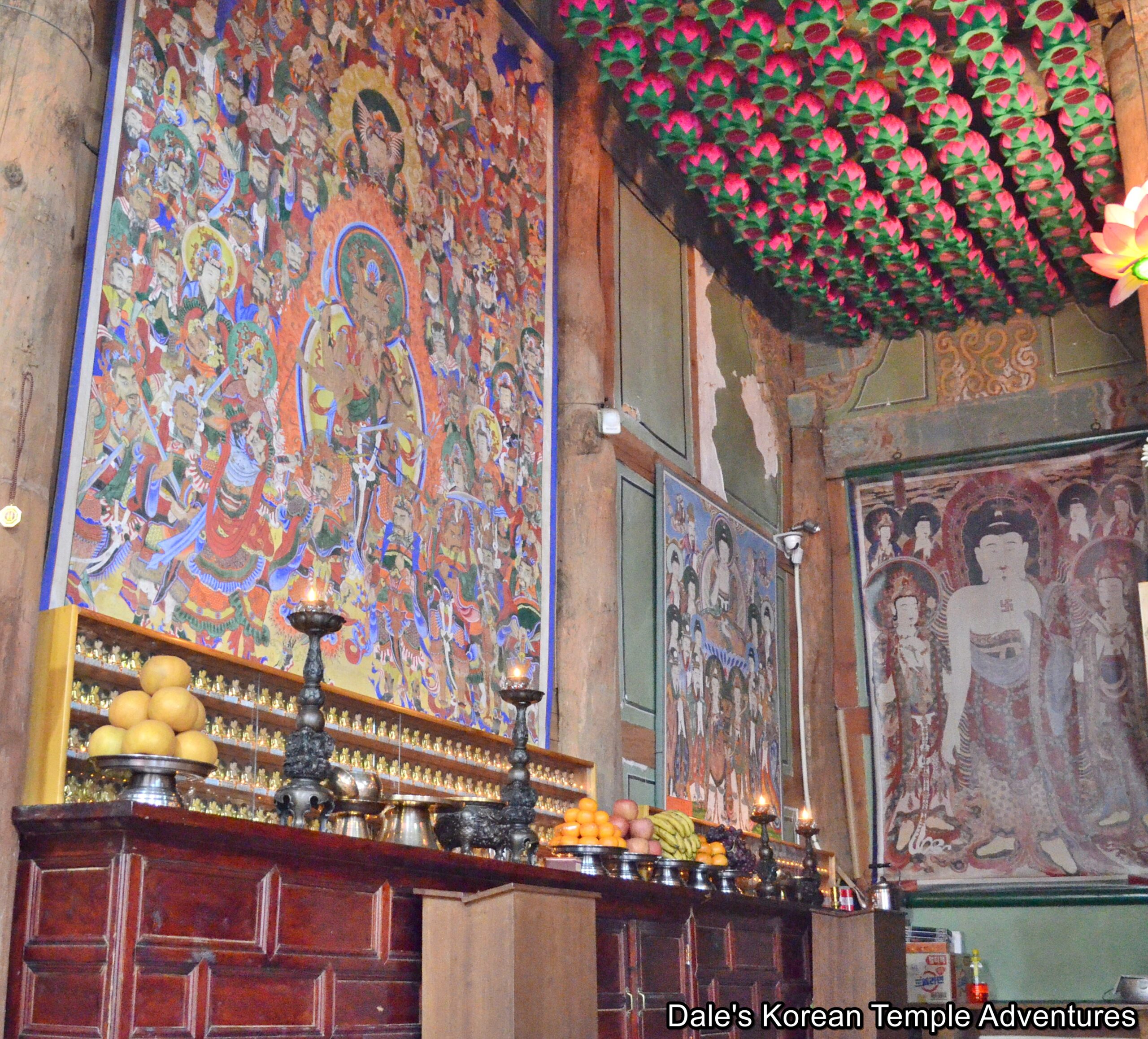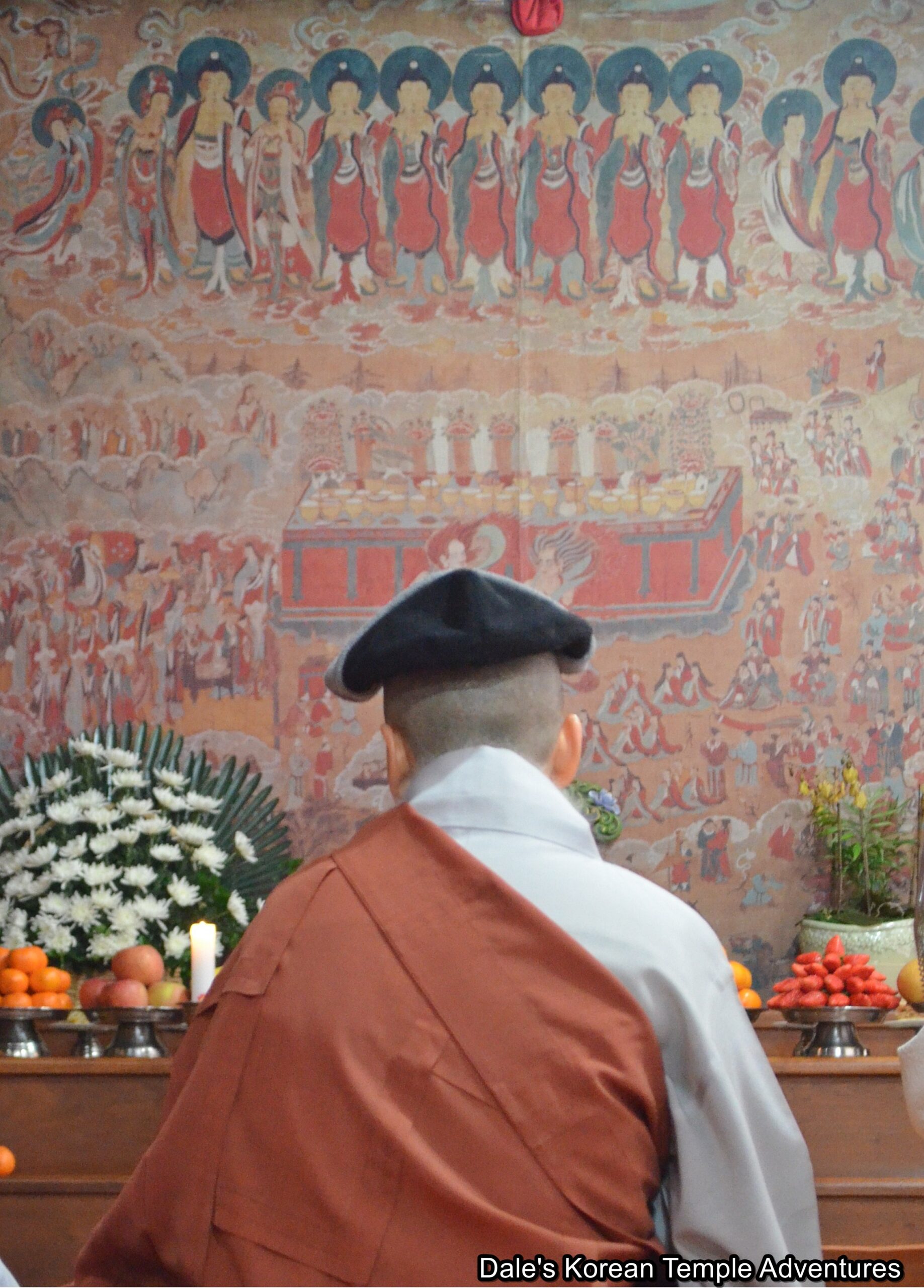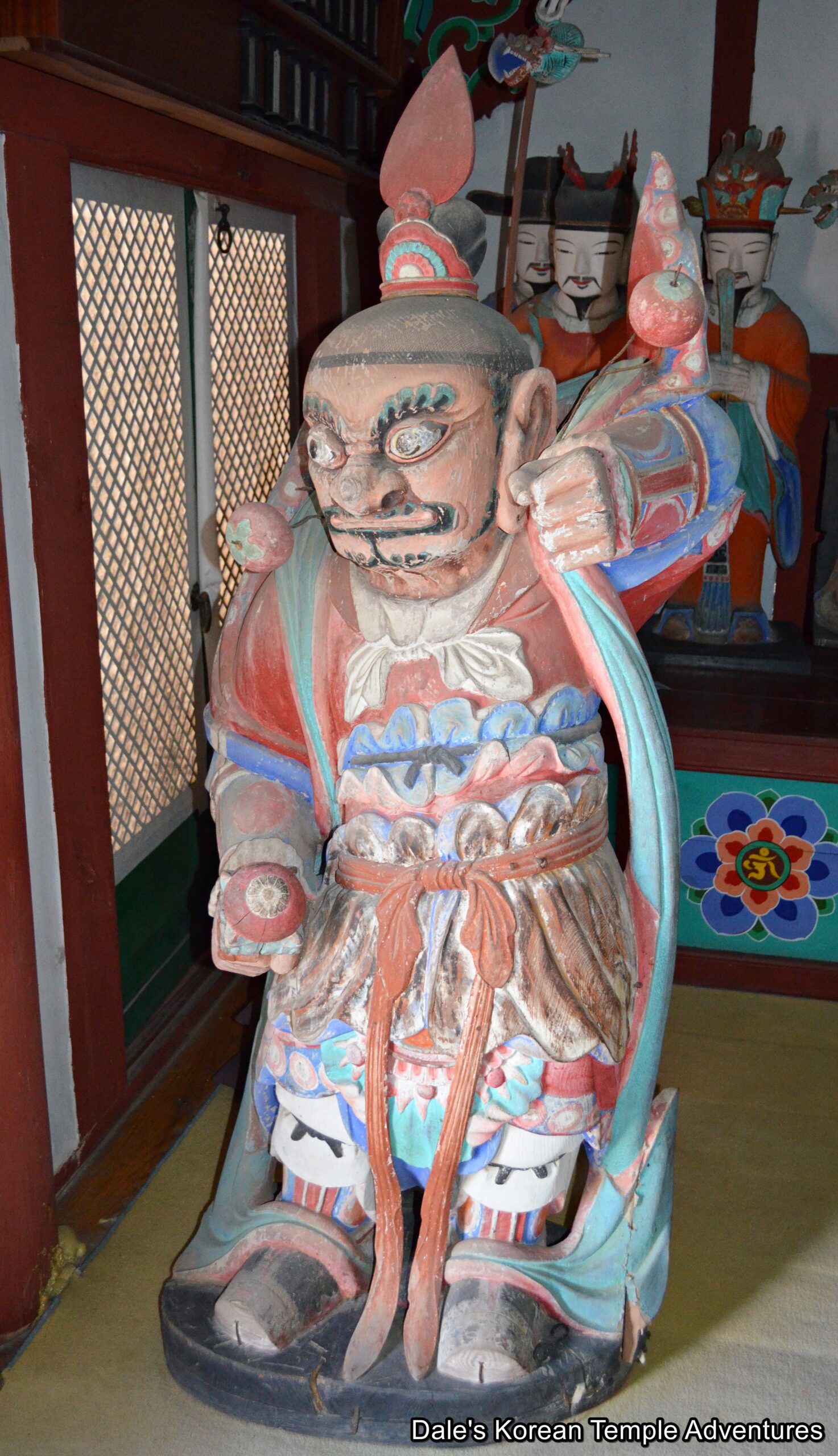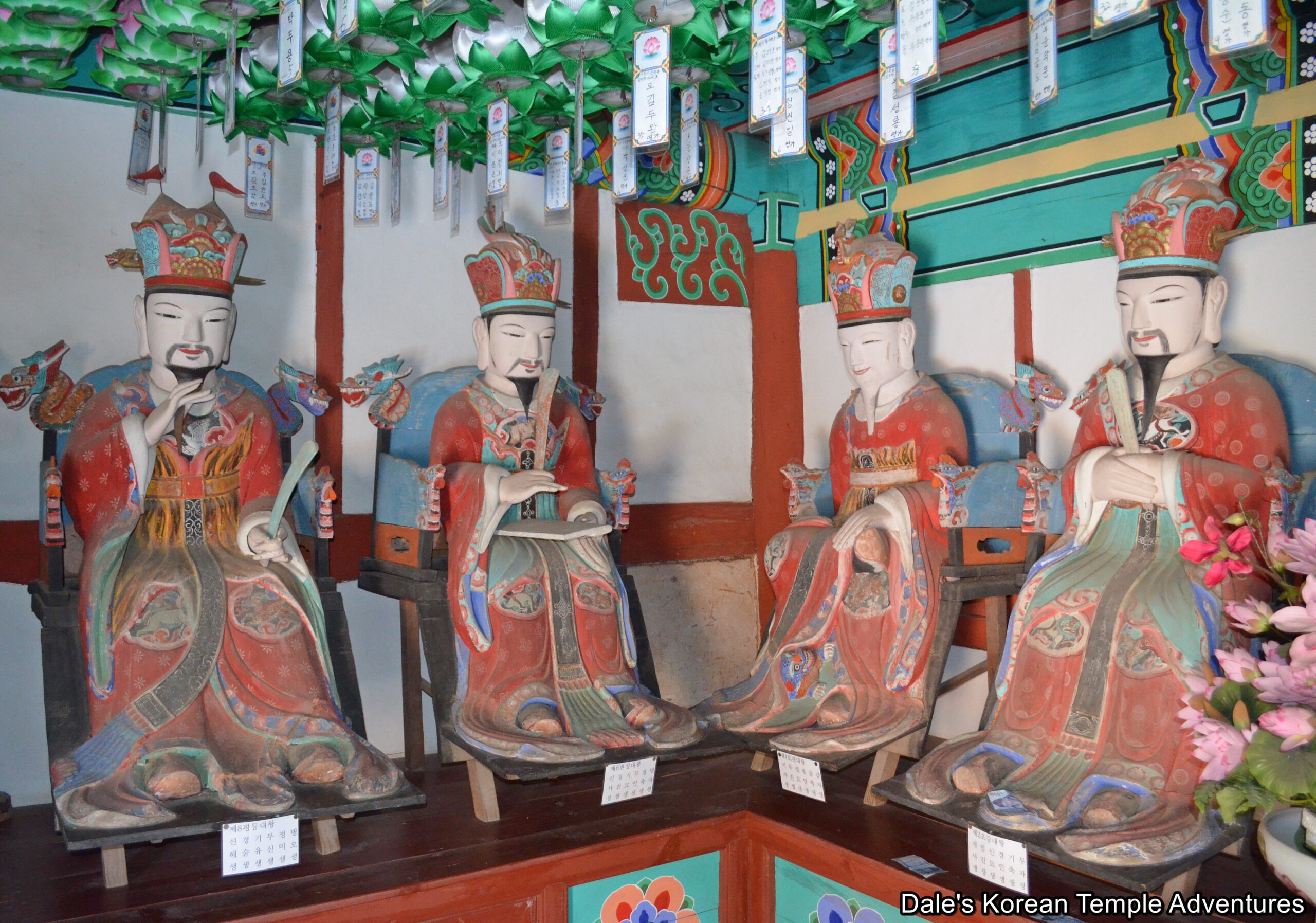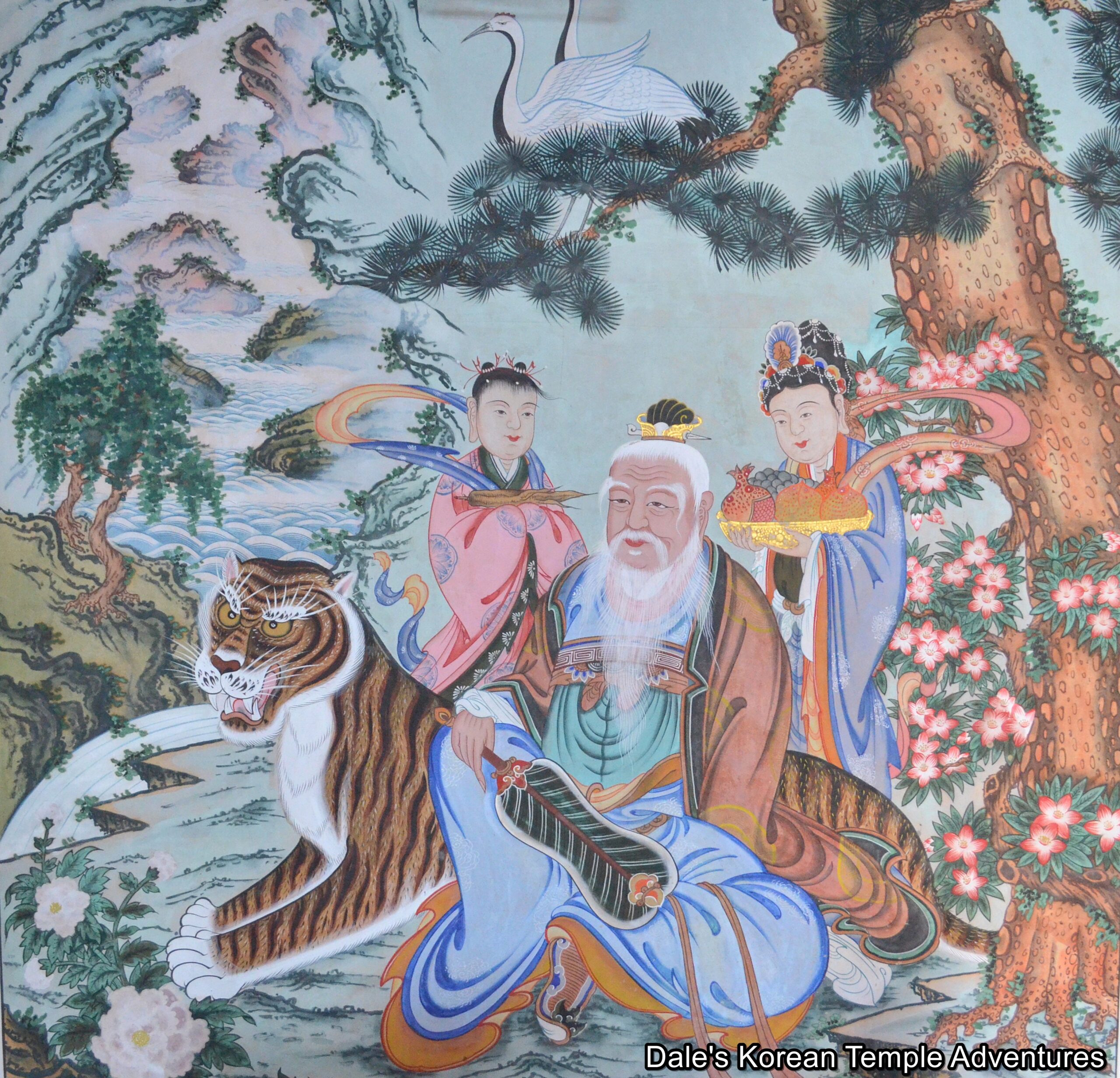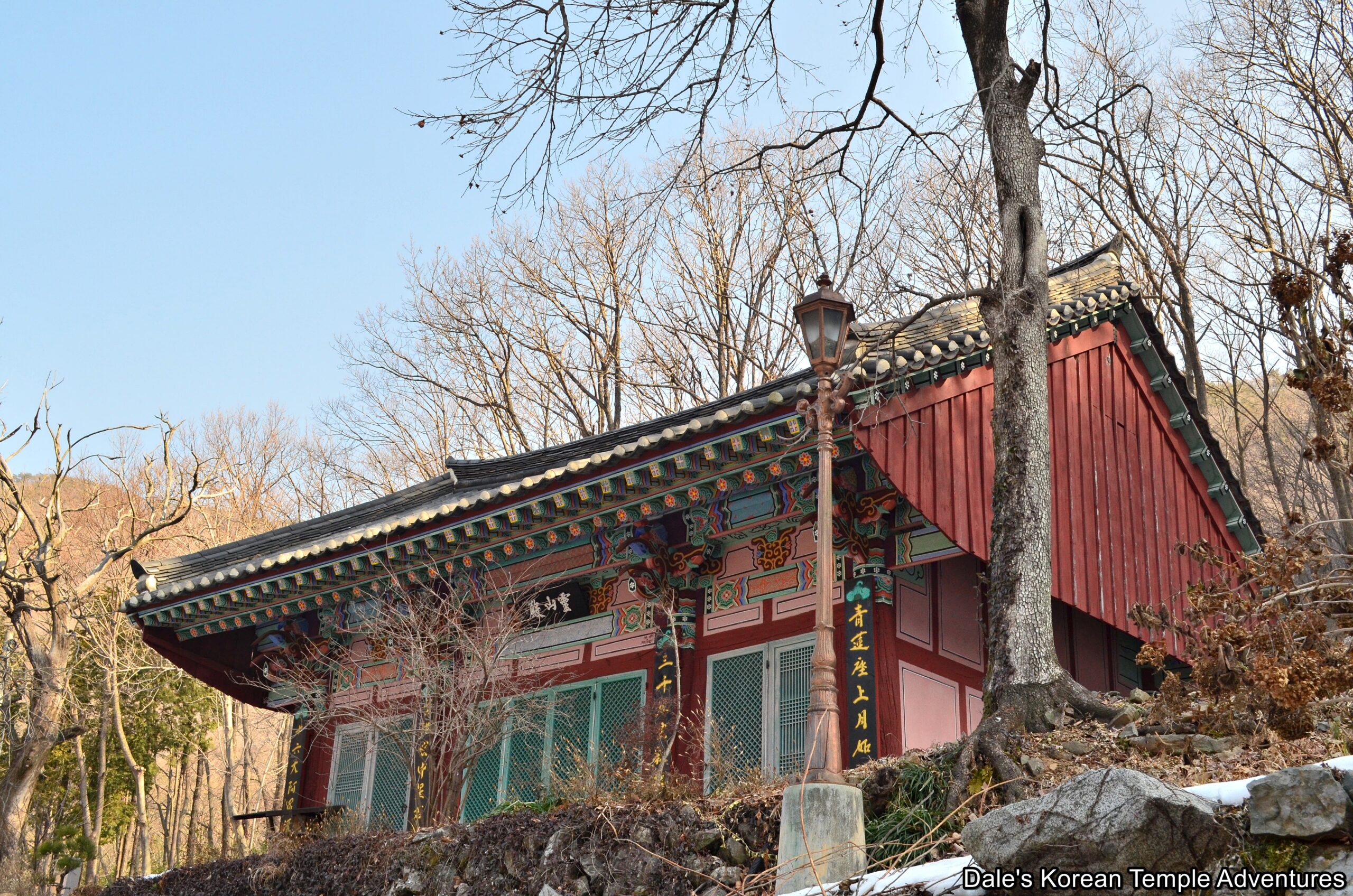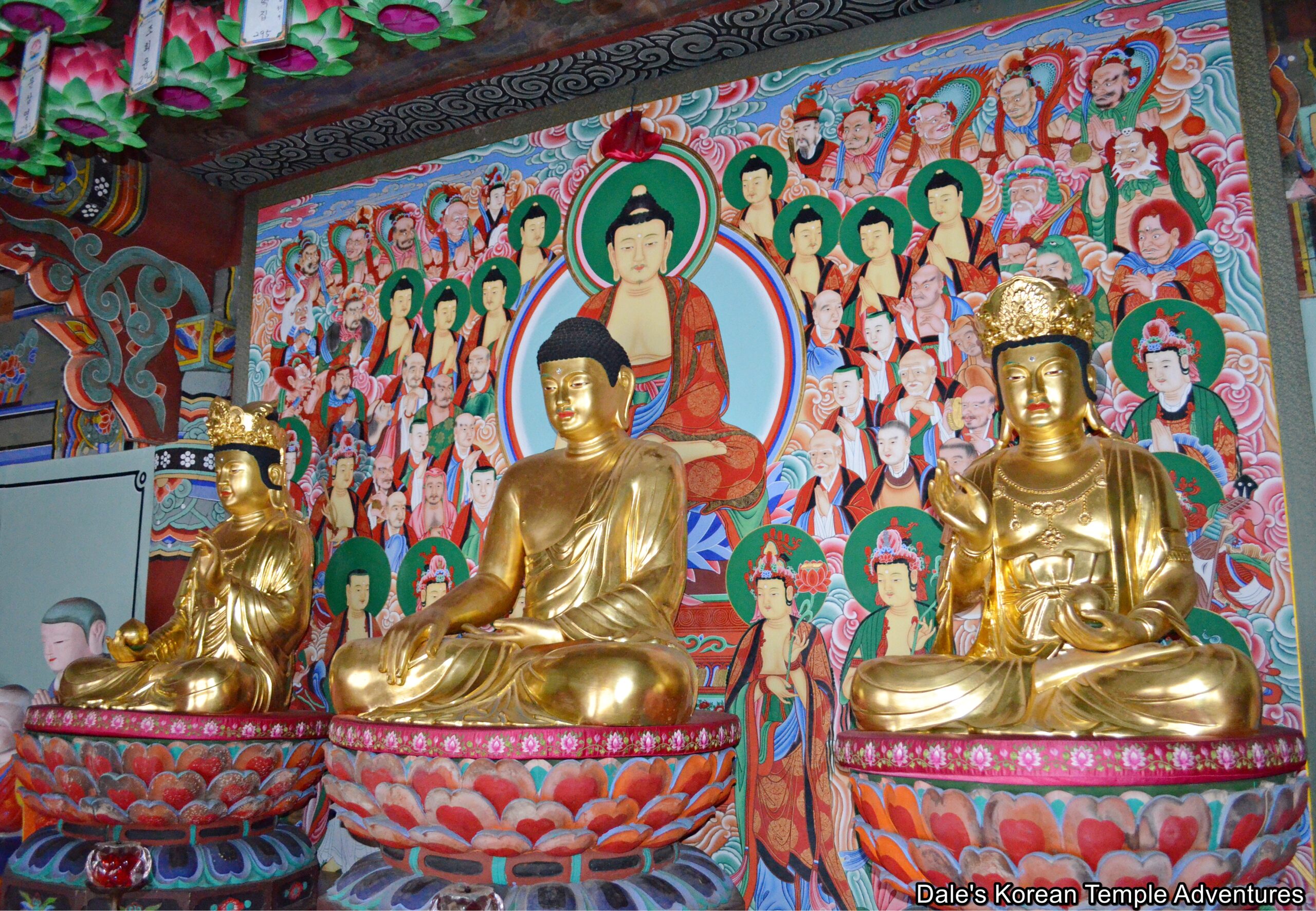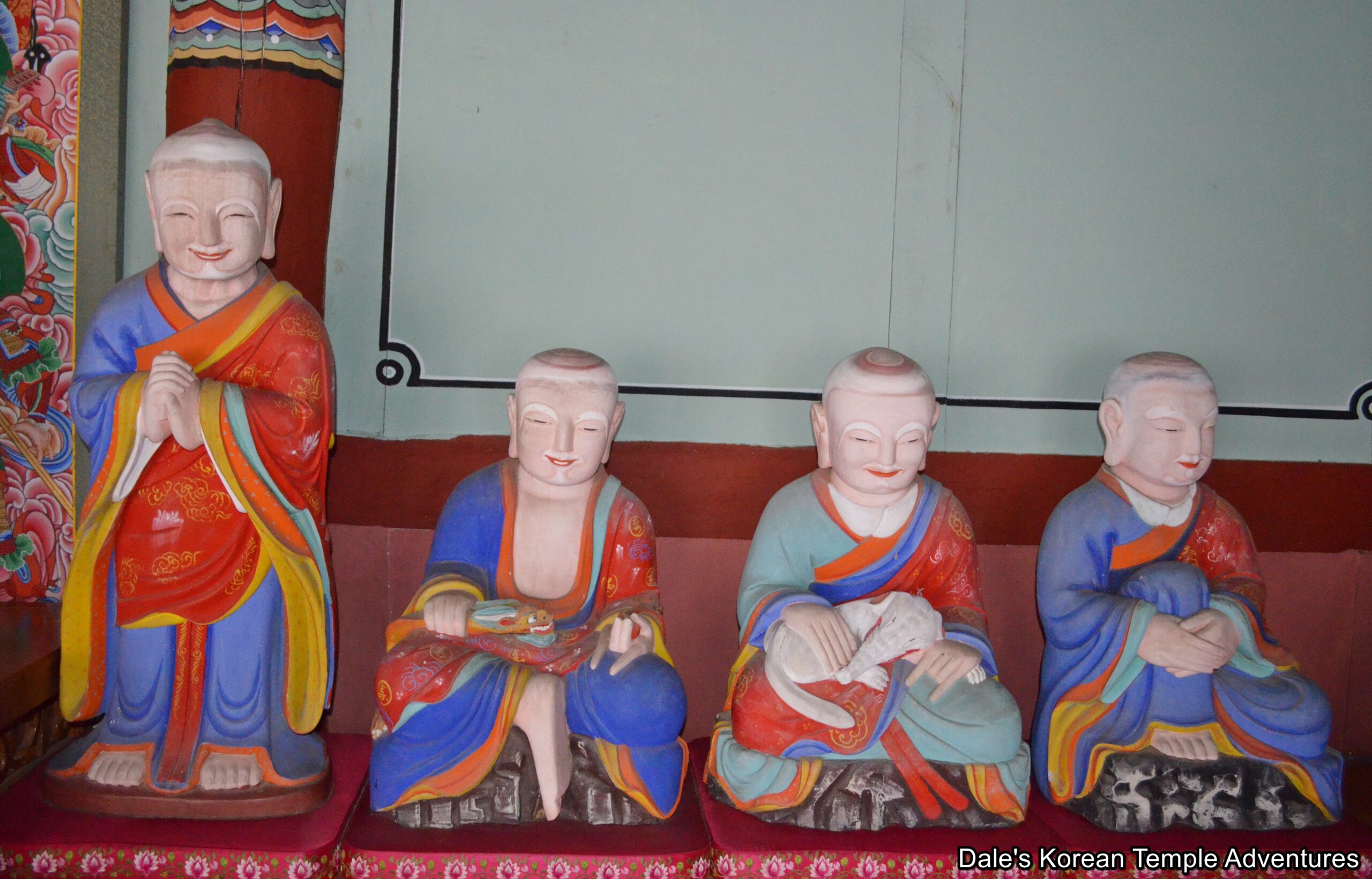Unheungsa Temple – 운흥사 (Goseong, Gyeongsangnam-do)
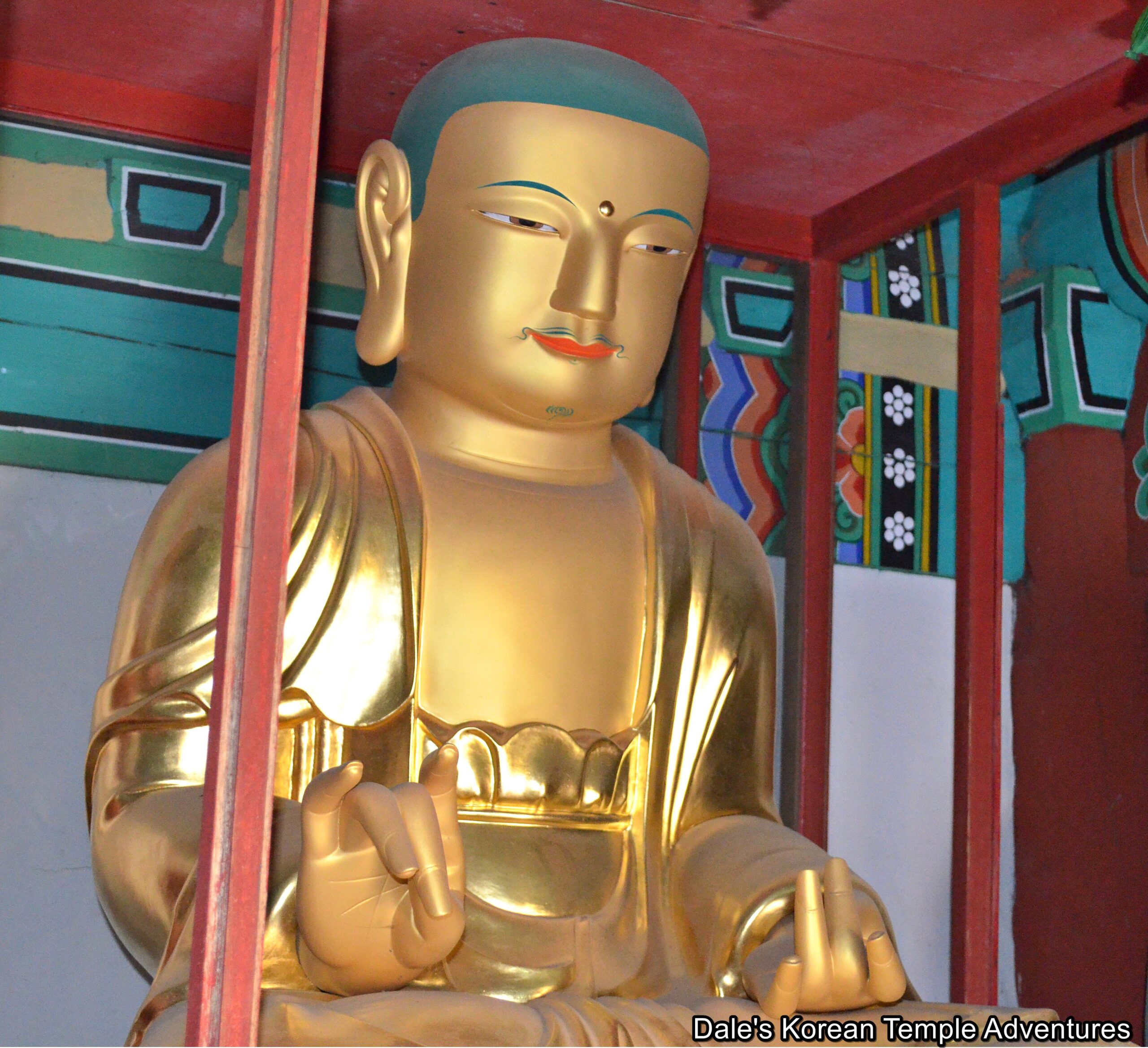
Temple History
Unheungsa Temple is situated up a long valley between Mt. Bongamsan (434.6 m) and Mt. Baekamsan (403 m) to the far west of Goseong, Gyeongsangnam-do. Unheungsa Temple was first constructed in 676 A.D. by the famed monk Uisang-daesa (625-702 A.D.). Little is known about the temple until it was used to raise an army of some 6,000 warrior monks during the Imjin War (1592-98) and led by Samyeong-daesa (1544-1610). A large portion of the temple was destroyed at this time. It wasn’t until 1651 that the temple was partially rebuilt. The current Daeung-jeon Hall and Yeongsan-jeon Hall were reconstructed in 1731.
Additionally, there was a bronze bell at Unheungsa Temple that was first made in 1690. However, during Japanese Colonial Rule (1910-45), it was smuggled off to Japan.
Unheungsa Temple has two hermitages directly associated with it. They are Seodokam Hermitage and Cheonjinam Hermitage. It’s believed that Cheonjinam Hermitage was first founded in 1692, while the water of Seodokam Hermitage is so powerful that alcohol can’t be made using this hermitage water.
In total, Unheungsa Temple is home to two Korean Treasures and five provincial treasures. The two Korean Treasures are the “Hanging Painting and Storage Chest of Unheungsa Temple,” which is Korean Treasure #1317; and the other is the “Buddhist Painting of Unheungsa Temple,” which is Korean Treasure #1694.
Temple Layout
You’ll first approach Unheungsa Temple up a long valley road. This secluded mountain road leads up to the equally secluded temple grounds. Along the way, you’ll pass by the stately Iljumun Gate. From the temple parking lot, and up a flight of stone stairs, you’ll see the newly built Boje-ru Pavilion. This newly constructed entry pavilion is beautifully perched on a large, stone barrier. You’ll pass through the first story of the structure and climb up a narrow set of a stairs as a modern, third-story pagoda comes into view.
Beyond the modern three-story pagoda that stands all alone in the compact temple courtyard, you’ll find the Daeung-jeon Hall. The Daeung-jeon Hall is Gyeongsangnam-do Tangible Cultural Property #82. The Daeung-jeon Hall was destroyed during the Imjin War and reconstructed in 1731. The exterior walls to the main hall are adorned in simple dancheong colours. But the interior is far more elaborate than the exterior. Resting under three individual canopies are three large statues. The central image is dedicated to Seokgamoni-bul (The Historical Buddha), who is joined on either side by Amita-bul (The Buddha of the Western Paradise) and Yaksayeorae-bul (The Buddha of Medicine, and the Buddha of the Eastern Paradise). This triad is Gyeongsangnam-do Tangible Cultural Property #538.
To the left of the main altar are a collection of three paintings. The first, and closest to the main altar, is a replica of the “Hanging Painting and Storage Chest of Unheungsa Temple.” The original, which dates back to 1730, is only brought out on the most important of days like Buddha’s Birthday. To the left of this smaller sized replica is a mural dedicated to Chilseong (The Seven Stars). And to the left of this shaman mural is a Shinjung Taenghwa (Guardian Mural). To the right of the main altar, on the other hand, is a stunning Gamno-do (Sweet Dew Mural) that dates back to 1730. It’s quite a large painting at 245.5 cm in height and 254 cm wide. It was created by the monk painter Uigyeom, who was a renowned painter in the Jeolla Province area during the 18th century along with 12 other painters. You’ll also find a painting dedicated to Dokseong (The Lonely Saint) in this area of the main hall, as well as a replica of the “Buddhist Painting of Unheungsa Temple, Goseong (Avalokitesvara Bodhisattva).” Like the Gamno-do, the original of this painting dates back to 1730, and it was also painted by Uigyeom. The original is Korean Treasure #1694. The interior of the Daeung-jeon Hall is packed with beautiful Buddhist artistry.
To the right of the Daeung-jeon Hall is the Myeongbu-jeon Hall. Like the main hall, the exterior of the Myeongbu-jeon Hall is adorned in simple dancheong colours. Stepping inside the Myeongbu-jeon Hall, you’ll find a solitary green-haired image of Jijang-bosal (The Bodhisattva of the Afterlife). Joining Jijang-bosal inside the Myeongbu-jeon Hall are the Siwang (The Ten Kings of the Underworld). They are large, wooden images of the Siwang. And both entrances to the Myeongbu-jeon Hall are a guarded by two, large Geumgang-yeoksa (Vajra Warriors).
Between the Daeung-jeon Hall and the Myeongbu-jeon Hall, and still to the right of the main hall, you’ll find a smaller Sanshin-gak Hall. This shaman shrine hall is solely dedicated to Sanshin (The Mountain Spirit). The modern painting dedicated to Sanshin is joined in the painting by a rather inquisitive-looking tiger and a pair of dongja (attendants) carrying a basket of fruit that includes a peach and pomegranate.
To the left of the Daeung-jeon Hall, on the other hand, is the Yeongsan-jeon Hall, which is the other historic shrine hall at Unheungsa Temple. Like the Daeung-jeon Hall, the Yeongsan-jeon Hall dates back to 1731. Like all the shrine halls at the temple, the exterior walls to the Yeongsan-jeon Hall are adorned in simple dancheong colours. Stepping inside the Yeongsan-jeon Hall, you’ll find a triad of statues resting on the main altar. In the centre is a statue of Seokgamoni-bul (The Historical Buddha). This central image is joined on either side by Yeondeung-bul (The Past Buddha) and Mireuk-bul (The Future Buddha). This main altar triad is joined on both sides (eight on each side) of the sixteen Nahan (The Historical Disciples of the Buddha). While they appear simple in design, they are still quite masterfully sculpted.
How To Get There
From the Samcheonpo Intercity Bus Terminal, you’ll need to catch Bus #30 to get to Unheungsa Temple. This bus goes directly to the temple. This bus says “Budu (부두) – Unheungsa (운흥사)” on it. There is also the same bus numbered Bus #30 that reads “부두-홀곡-운흥사” on it. This bus also goes to Unheungsa Temple, but it takes about ten minutes more. In total, the direct bus, Bus #30, takes about thirty minutes, or 16 stops, to get to Unheungsa Temple, while the other bus takes about 40 minutes.
Overall Rating: 7/10
While smaller in size, and with only a handful of shrine halls, Unheungsa Temple still has more than enough for visitors to enjoy including the five provincial treasures and the pair of Korean Treasures. The interior of the Daeung-jeon Hall is filled with Buddhist artistic excellence including the main altar triad, the Gamno-do, and the shaman murals. Additionally, the statues inside both the Yeongsan-jeon Hall and the Myeongbu-jeon Hall are stunning as well. Unheungsa Temple has undergone a fair amount of reconstruction over the past decade, and it has only helped elevate the temple that much higher in its overall beauty and overall aesthetic.
